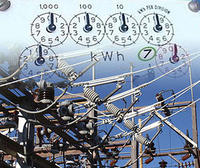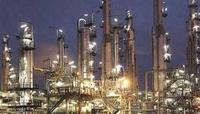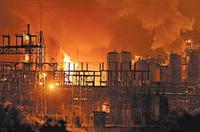-
Pennsylvania's bridge structural deficiency rate is nearly double the national average
There are 4,284 bridges in the 5-county Pittsburgh area, and 1,246 of them, or 29 percent, are rated structurally deficient; this means that at least one bridge element — its superstructure, substructure, or deck — was found by inspectors to be in poor or worse-than-poor condition; Pennsylvania’s 22 percent bridge structural deficiency rate is nearly double the national average
-
-
India tunnels under Himalayan peaks to keep up with China
In the past decade, as China has furiously built up its military and civilian infrastructure on its side of the Himalayan border, but the Rohtang Pass on the Indian side has stood as silent testimony to India’s inability and unwillingness to master its far-flung and rugged outermost reaches; in June, India has began to change that by starting the ambitious project which will take five years and require boring five miles through the Pir Panjal range; several other tunnels, which would allow all-weather access to Ladakh, which abuts the Tibetan Plateau, are also in the works
-
-
Worry: Hackers can take over power plants
In many cases, operating systems at power plants and other critical infrastructure are decades old; sometimes they are not completely separated from other computer networks used by companies to run administrative systems or even access the Internet; those links between the administrative networks and the control systems provide gateways for hackers to insert malicious codes, viruses, or worms into the programs that operate the plants
-
-
INL's International Symposium on Resilient Control Systems (ISRCS)
Idaho National Laboratory is helping generate innovative research and codify resilience in next-generation control system designs by hosting the 3rd International Symposium on Resilient Control Systems in Idaho Falls 10-12 August; INL says it sponsors the symposium to support a multidisciplinary approach to the complex nature of control system interdependencies that ensure safe and secure operation of critical components of the U.S. infrastructure including electrical grids, water supplies, and transportation
-
-
Commerce Department seeks comments on cybersecurity and its impact on innovation
The U.S. Commerce Department seeks comments from all stakeholders, including the commercial, academic and civil society sectors, on measures to improve cyber security while sustaining innovation; the department says that the Internet has become vitally important to U.S. innovation, prosperity, education, civic activity, and cultural life as well as aspects of America’s national security, and that a top priority of the department is to ensure that the Internet remains an open and trusted infrastructure, both for commercial entities and individuals
-
-
Smart Grid offers target-rich opportunities for hackers

SCADA systems are vulnerable to hacking, but the smart grid is even more vulnerable; security experts at the Black Hat conference in Las Vegas last week warned that the accelerated deployment of smart-grid technology could leave critical infrastructure and private homes vulnerable to hackers; hacking may come in a benign form — customers might simply figure out how to lower their electricity bills by manipulating how much energy their meters say they are using; hacking may also have more sinister aspects: large-scale attacks may also be possible, and the smart grid’s serious vulnerabilities make it possible to shut down the power supply to an entire city
-
-
Good business: Developers make buildings more disaster-secure than building code requires
A Florida developer hopes to get more business by making his building hurricane-proof; with debris-resistant windows on all thirty-five of its stories, the developer says the building would withstand a Category 5 hurricane without significant damage; the extra hurricane proofing built into the Miami building shows that sometimes the private market can overtake the public sector when it comes to building design and safety standards; for example, in New York and Washington, D.C., some developers have put in anti-terrorism safeguards that exceed building codes
-
-
Chemical industry welcomes extension of current chemical facilities security measure
The U.S. chemical industry breathes a sigh of relief: a senate panel votes unanimously to extend current chemical facilities security law to 4 October 2013; the industry worried about modifications to the Chemical Facility Anti-Terrorism Act of 2009 (CFATS) which would make the measure more stringent — for example, by requiring the chemical plants replace the more toxic and volatile chemicals they use with inherently safer technologies, or IST
-
-
Senate panels to discuss high-risk chemical facilities
This is an important week in chemical facilities security legislation, as two Senate panels are set to hold hearings on how the Environmental Protection Agency (EPA) and DHS can most effectively monitor the security measures taken by U.S. chemical facilities:
-
-
150,000 U.S. bridges are rated "deficient"
About 25 percent of the U.S. bridges remain “structurally deficient” or “functionally obsolete”; the deterioration of bridges in the United States is the direct result of a confluence of three developments: the system is aging; the costs of maintaining bridges is high; and traffic on these bridges is steadily increasing
-
-
Laser pulses to help in creating the most detailed map of California coastline ever assembled
A $3.3 million mapping effort will see researchers in an airplane flying back and forth along the California coast shooting thousands of laser pulses per second at the rocks, beaches, and cliffs along the 1,200-mile shoreline from Mexico to Oregon, generating ultra-detailed 3-D images of the contours of the land in huge computer files; findings could be used to figure out where to build sea walls, or expand wetlands to reduce flooding, or where to move existing development
-
-
Rubber dam at Tempe Town Lake bursts, emptying lake overnight
An inflatable rubber dam (called “bladder”) on Tempe’s Town Lake exploded, sending a wall of water into the Salt River bed; at least three-quarters of the about one billion gallons of water had drained overnight; those parts of the rubber dam which are wet have held up, but a plan to keep those parts of the dam which are above water failed, exposing the rubber to scorching sun that has damaged the material
-
-
U.S. chemical industry comes out swinging against new Senate plant security bill

Senator Frank Lautenberg (D-New Jersey) introduced a 107-page chemical plant safety bill which goes further than a similar bill — HR-2868 — approved by the House last November; Lautenberg’s bill requires the highest-risk facilities replace the most toxic and volatile chemicals they use with inherently safer technology (IST); it also set a provision, known as private right of action (PRA), which would allow citizens to file suit in federal court against DHS to force enforcement against a specific facility, and would allow private citizen petitions to DHS to demand federal investigation of suspected security shortcomings at particular sites
-
-
Malicious virus targets SCADA systems

Supervisory Control and Data Acquisition, or SCADA, stands for large-scale distributed remote processing systems that gather data in real time to control critical industrial, infrastructure, or facility processes and equipment; SCADA is used to control U.S. critical infrastructure — power plants, oil and gas refining, telecommunications, transportation, dams, water, waste control, and more; Siemens is warning customers of a new and highly sophisticated virus that targets SCADA systems; these systems are typically not connected to the Internet for security reasons, but this virus spreads when an infected USB stick is inserted into a computer
-
-
DHS initiates first enforcement action of chemical plant safety regulations

DHS initiated its first enforcement actions against U.S. chemical facilities under federal anti-terrorism law; the department sent letters to 18 chemical facilities warning that their failure to comply with safety regulations may result in heavy fines or worse; the administrative orders sent to the facilities represent the final step before the department begins prosecution; under the law, DHS can assess fines of up to $25,000 per day for failure to comply; in addition, the law gives the department authority to shut down a chemical facility if its owners fail to respond to DHS requirements for security improvements; for security reasons, DHS declined to identify the 18 facilities or to indicate the types of sites involved or even where they are generally located
-
- All
- Regional
- Water
- Biometrics
- Borders/Immig
- Business
- Cybersecurity
- Detection
- Disasters
- Government
- Infrastructure
- International
- Public health
- Public Safety
- Communication interoperabillity
- Emergency services
- Emergency medical services
- Fire
- First response
- IEDs
- Law Enforcement
- Law Enforcement Technology
- Military technology
- Nonlethal weapons
- Nuclear weapons
- Personal protection equipment
- Police
- Notification /alert systems
- Situational awareness
- Weapons systems
- Sci-Tech
- Sector Reports
- Surveillance
- Transportation
Advertising & Marketing: advertise@newswirepubs.com
Editorial: editor@newswirepubs.com
General: info@newswirepubs.com
2010-2011 © News Wire Publications, LLC News Wire Publications, LLC
220 Old Country Road | Suite 200 | Mineola | New York | 11501
Permissions and Policies
Editorial: editor@newswirepubs.com
General: info@newswirepubs.com
2010-2011 © News Wire Publications, LLC News Wire Publications, LLC
220 Old Country Road | Suite 200 | Mineola | New York | 11501
Permissions and Policies
